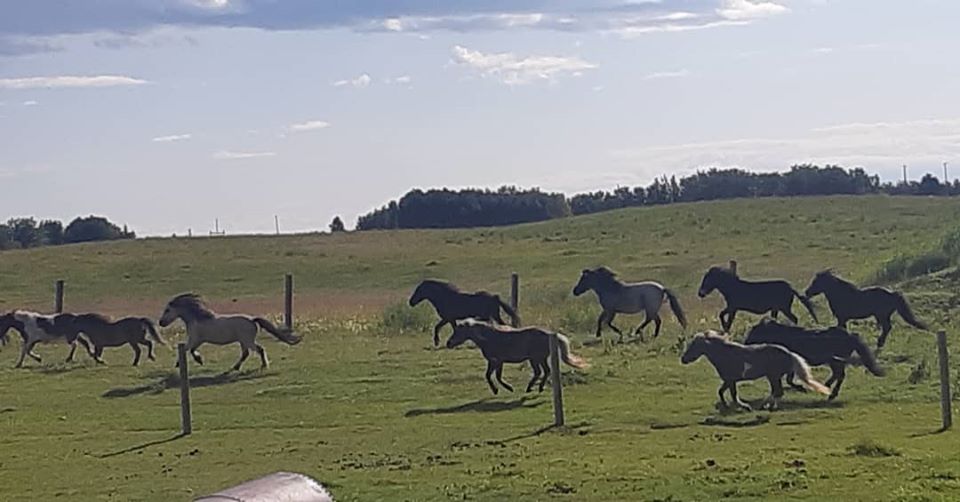Horses are born to move, and their movement has captured our imaginations ever since horses and humans first came in contact with one another, and Miniature Horses are no exception.
But the way that a horse moves can be good for them, building healthy musculature, allowing for freedom of motion and setting them up for a long athletic career, or their movement can harm them, building the wrong muscles, causing repetitive strain injuries, and resulting in pain and a reduced level of performance, or even a reduced life span as a result.
If you’d like to start educating your eye to identify healthy vs harmful movement in our miniature driving horses, here are a few things to watch for. While not an exhaustive or comprehensive list, it is a good place to start.
Good:
- Steps and rhythm are even and equal on front and hind legs.
- Both front and hind legs have the same length of stride and similar elevation.
- The hind legs reach well forward, under the horse, falling at or ahead of the prints of the front feet.
- The horse’s back is lifted and round – look for a very small or no space between the horses back and the backstrap of the harness.
- The horse’s neck is arched, with an open throatlatch.
- The horse doesn’t have difficulty breathing.
- The horse’s face is soft, mouth closed, no teeth showing.
- There is no use of gimmicks or tools to force posture or movement.
Bad:
- The front legs are much more extreme in their movement than the hind.
- You can’t identify the one-two rhythm of the trot.
- The hind legs trail out behind the horse, with a large gap between the front and hind legs.
- The horse’s back is hollow or even swayed, with a large space showing beneath the backstrap of the harness.
- The horse’s neck is thick and hard, showing no definition, just a solid mass of muscle.
- There is no obvious throatlatch, the horse’s jowl crushed against their neck.
- The horse wheezes or roars in movement.
- The mouth is open, or lips pulled back in a grimace. (learn more about the equine pain face)
- Devices to force posture or movement are or have been used on the head or feet of the horse.
And don’t dismiss your instincts – even if you’re not experienced with horses, if you look at something and think “that doesn’t look comfortable” or “that horse doesn’t look happy” you’re probably right.
Miniature Horses are great athletes. They can be great driving horses without the painful artificial contrivances that force them into ever more extreme movement, and a championship win doesn’t necessarily mean that they are moving in a way that’s beneficial to the horse. The show ring is a unique environment, with only a short time in front of a judge, so while I truly believe that a correctly, healthy moving horse can be competitive, unfortunately in many cases the opposite is also true, and a horse who is displaying harmful movement may be the one who wins.
If your first concern is for the welfare of your horse, then understanding what you’re seeing, and what was involved in creating that movement, will help you make educated choices on behalf of your horse.
For anyone who would like to learn more about helping encourage healthy movement in your driving horse, the Improving Your Miniature Driving Horse online course is for you! Click here to learn more and register!

Great article Kendra,
I really appreciate your comment about not dismissing our instincts. I *knew* something was off with Missy but couldn’t identify what.
My barn owner recommended an equine body work person who made a huge difference!
Susan
great advice Kendra,
I have learned to trust my eye, it can catch something that is just off or odd, you might not know what, thats ok you can learn, but trust your instincts…
Horses should be happy relaxed in their work, no matter what it is !
Structure is soon important , understanding structure
Yup what the judges think is lovely standing still doesn’t mean it can moving like it should for driving or anything else.
I would rather have ugly that is structurally sound and moves great, then oh so lovely to the eye and is a mess when moving :)))
Both is always a special gift from the horse gods !
Thanks for reminding us of all this